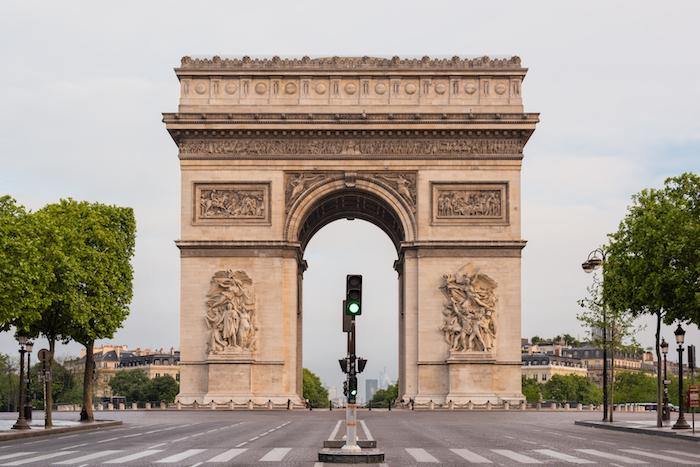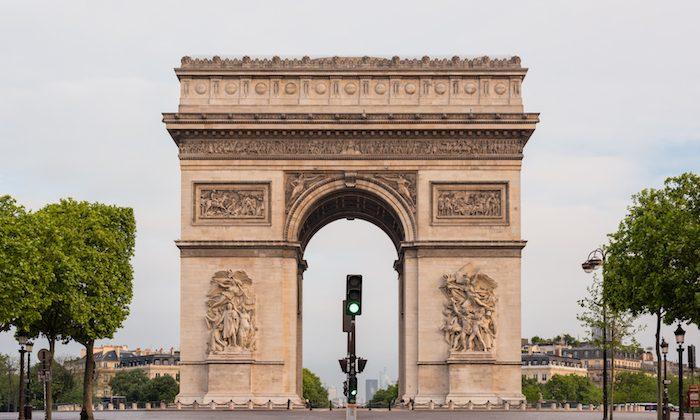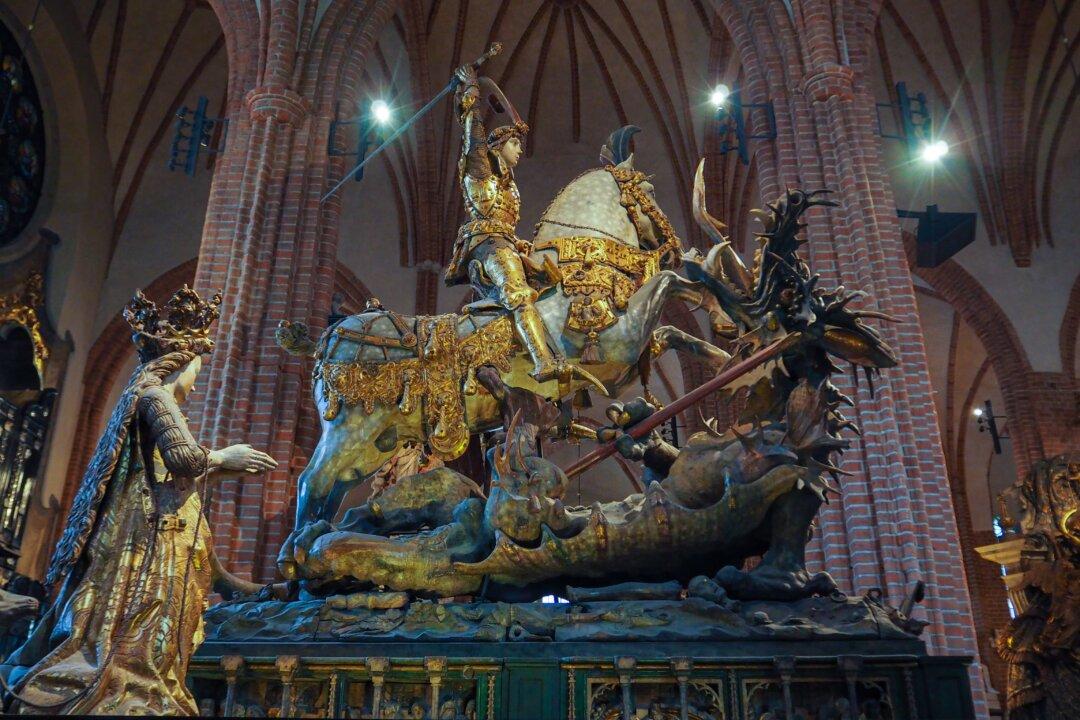In 1805, Napoléon Bonaparte promised “triumphal arches” to his troops after they won the Battle of Austerlitz.
The first arch Bonaparte commissioned was the Arc de Triomphe in Paris, and construction began on Aug. 15, 1806, Bonaparte’s birthday.
As a great admirer of the fine arts of antiquity, Bonaparte charged architect Jean-François-Thérèse Chalgrin to look at classical architecture for inspiration. Chalgrin looked to the Arch of Titus (A.D. 81) in Rome for his design, although the Arc de Triomphe has no columns.
The 164-foot, neoclassical arch shows scenes of dynastic life as well as battle scenes, which differs from the classical tradition of triumphal arches that depict military victories only.
Near the top, a frieze runs around the arch: The east facade frieze faces the Champs-Élysées, which in Bonaparte’s time would have faced the Tuileries, or the royal and then his imperial palace. (The palace was destroyed in 1871 during the Paris Commune.) The east facade frieze shows French troops as they depart for new campaigns, and the west facade shows the troops as they return.

Arc de Triomphe Shutterstock
At the base of each of the four pillars stands a sculptural group on a pedestal, each showing a historic scene. The most famous is the “Departure of the Volunteers of 1792” by François Rude, commonly known as “La Marseillaise,” which is also the name of the French national anthem.
“La Marseillaise” represents the departure of 200,000 Frenchmen, off to defend their republic. The volunteers, ordinary French folk, are represented in the sculpture as naked or in civilian dress, the young and old respectively, united in their willingness to fight for their country. The winged woman in the scene is the Genius of Liberty, who incites the men to fight.
The “Triumph of Napoleon” by Jean-Pierre Cortot celebrates the 1810 Treaty of Vienna peace agreement. In this sculpture, Bonaparte wears classical robes and stands proudly in the center, as Victoria, the Genius of Victory over death, holds a laurel crown above his head; in her other hand, a palm branch. Above them all hovers the winged Genius of Fame, who announces Bonaparte’s victory with her trumpet, a motif not seen in antiquity but that emerged in the Renaissance period. In her other hand, Fame holds a battlestaff topped with the imperial eagle, which Bonaparte’s battalions would have carried into battle.
The sculpture cycle is completed on the west facade, with Antoine Etex’s sculptures entitled “Resistance of 1814,” and “Peace of 1815.”
King Louis-Philippe dedicated the arch in 1836 to the armies of the Republic and the Empire.
To find out more about the Arc de Triomphe, visit Arc-de-Triomphe.fr.en






